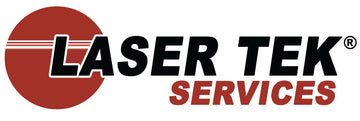Do you print shirts or garments and make money out of it? Or just a pastime hobby? Do you have a printer sitting in your desk? You can print shirts with a printer using an iron-on transfer paper.
Printing shirts can be fun and rewarding. But if you’re left with the traditional silk screen or machine heat press (using vinyl) methods, you might not have tried iron-on method using a heat transfer paper. Both former printing methods have their own pros and cons. Silk screening is a time-consuming method especially the during drying, but its print output lasts, resistant to heavy washing and does not wear easily. Unless you own one, a heat pressing machine is expensive than a printer. Iron-on transfer has none of those disadvantages mentioned, but that doesn’t mean you shouldn’t exercise caution and skip some important things to keep in mind.
Iron-on method is a cheaper alternative for shirt printing and can be done at home using your regular iron as your heat pressing machine; making shirt printing process way easier than before. This process requires a heat transfer paper that can print multicolored images on a single sheet. A heat transfer paper is intended for use on garments or other substrates with cotton, cotton blended fabrics, or synthetic fabrics like polyester, lycra or nylon. It contains polymer film, which enables to bond the ink and paper to the garment together.
Heat Transfer Paper
Before you start printing, there are a few kinds of transfer paper with its own subtypes that should be used for specific applications. A light heat transfer paper is used for light colored fabrics like white while dark heat transfer paper is used for black or other dark colored shirts. While printers don’t have white ink, light heat transfer paper uses the white or light color of the shirt as a substitute while dark heat transfer paper prints like a regular transfer paper using the white color from the paper itself. There are heat transfer papers specifically made for inkjet or laser printer so be mindful what you buy because these papers cannot be used interchangeably. Laser transfer paper is further categorized to single / full color or white toner laser paper. Single color laser transfer paper is compatible with both light and dark shirts while full color laser transfer paper has separate light and dark variants similar to inkjet transfer paper. There’s also a white toner laser transfer paper, a unique type that’s specifically made for white toner laser printer for transfers on one or multiple colors that can blend in the background or blank space of the image.
Applying
When all things are ready (printed image from the appropriate paper, shirt, iron, cardboard), lay the shirt on a flat, hard wooden surface. Don’t forget to mirror your image before printing and ironing the light heat transfer paper to your shirt. Make sure that the shirt must be washed, completely dry and ironed and put a cardboard underneath where the image will be ironed on to protect the fabric. Cut and trim the image so you can neatly position and place it to the shirt. Set the iron to maximum setting (do not use steam!) then evenly iron-on the image to the shirt with steady moderate pressure for a few minutes. Continue ironing the edges until the image is fully attached to the fabric. Make sure to keep the iron moving to avoid destroying the image and scorching the paper. After ironing, give it time to cool before peeling the transfer paper carefully. You can only hand wash the shirt inside out after a day since ironing so that the transferred image will last.
Have fun printing!





